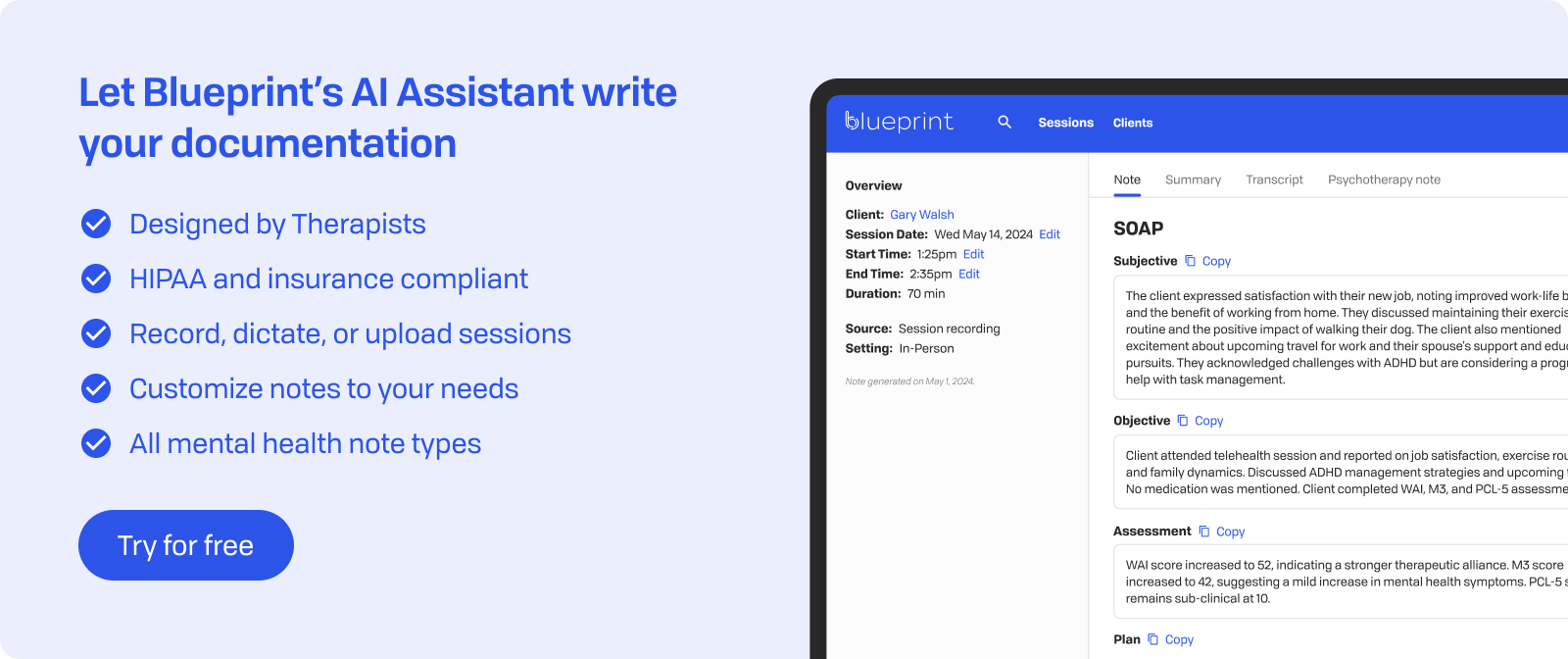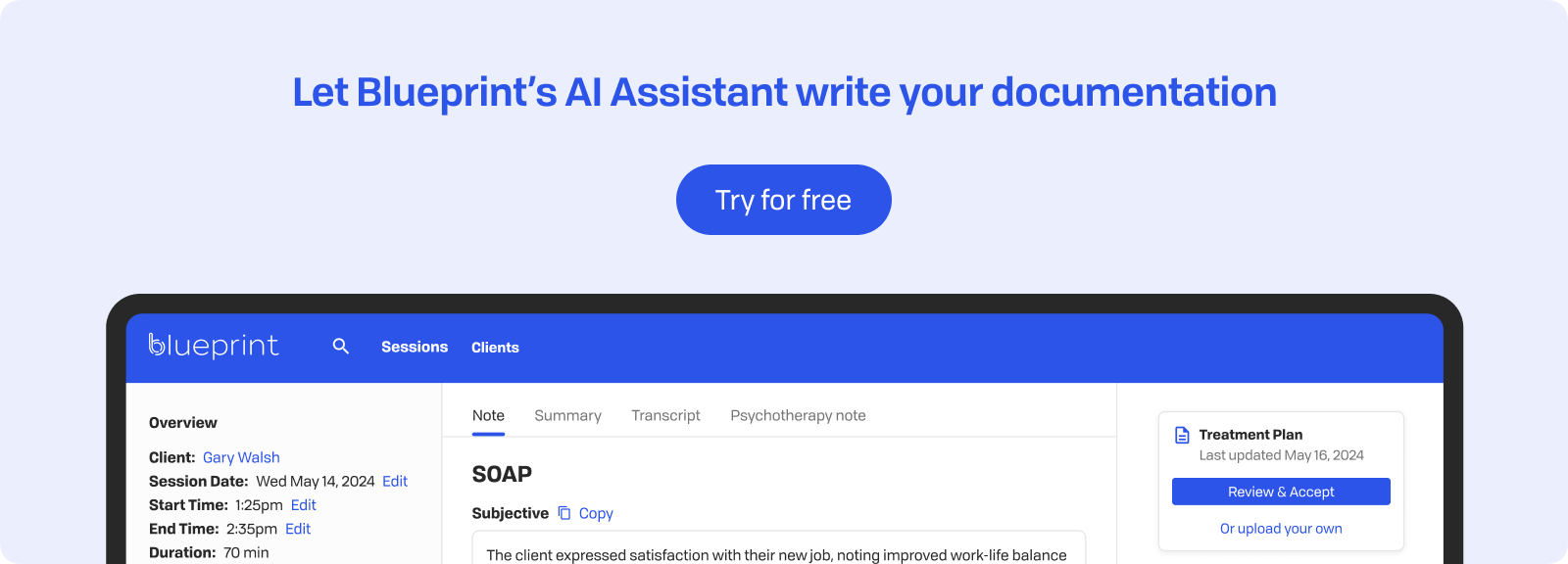
In Brief
Mental health stigma stands as a major barrier preventing people from seeking the help they need. Even with increased awareness and advocacy, many individuals still face judgment, shame, and misunderstanding when thinking about therapy. These obstacles aren’t just external; they often exist within clients' minds, creating resistance that therapists must navigate.
Stigma affects more than just the initial decision to seek help. It influences how clients engage in therapy, what they’re willing to share, and whether they’ll continue treatment when it's most needed. When we understand how stigma works, we can create therapeutic spaces where clients feel safe to explore their struggles without fear of judgment.
Every therapist has worked with clients who feel shame about needing help, worry about others’ opinions, or have internalized negative messages about mental health. By examining stigma and developing strategies to address it, we can better support clients in overcoming these barriers. This approach helps therapists recognize stigma’s various forms and provides practical methods to help clients move past shame toward healing.
Defining Mental Health Stigma
Mental health stigma appears in three interconnected forms that obstruct treatment. Public stigma involves society’s negative attitudes, stereotypes, and discriminatory behaviors toward those with mental health conditions. This might include employers doubting the capabilities of someone with depression or friends distancing themselves from someone who mentions seeing a therapist.
Self-stigma happens when individuals absorb these societal messages, leading to shame, reduced self-esteem, and self-imposed limitations. A client might think, "I should handle this myself" or "Only weak people need therapy." This internalized stigma often proves more damaging than external judgment because it erodes self-worth from within.
Structural stigma includes institutional policies and systems that disadvantage those with mental health conditions. Examples include insurance companies offering limited mental health coverage, workplaces lacking mental health days, or schools with inadequate counseling resources. These systemic barriers reinforce the idea that mental health is less important than physical health.
The belief that seeking therapy indicates "serious mental illness" creates another major barrier. Many clients fear that visiting a therapist means admitting they’re "crazy" or broken. This misconception ignores the reality that therapy helps people across the mental health spectrum, from those managing daily stress to those facing major life changes.
These forms of stigma directly impact the willingness to seek care. Research consistently shows that stigma delays help-seeking behavior by an average of 8-10 years from when symptoms first appear. People often try self-help books, confide in friends, or hope problems resolve on their own before seeking professional support.

Emotional Consequences for Clients
The emotional toll of mental health stigma leads to deep internal struggles that often feel harder to bear than the original concerns that bring someone to therapy. Clients frequently describe feeling caught between their need for support and their fear of what seeking help might reveal about them.
Shame emerges as the most common emotion, with clients reporting thoughts like "I should be stronger than this" or "What's wrong with me that I can't handle life like everyone else?" This shame intertwines with embarrassment about needing professional help, especially when clients compare themselves to others who seem to manage without therapy. Many clients express feeling weak or defective, as if seeking therapy confirms their worst fears about themselves.
Fear of judgment creates another layer of emotional distress:
- Family reactions: "What if my parents think they failed in raising me?"
- Social consequences: "Will my friends treat me differently if they know?"
- Professional concerns: "Could this affect my career advancement or job security?"
- Romantic relationships: "Will potential partners see me as damaged goods?"
The internal conflict between wanting help and fearing labels generates significant anxiety. Clients often describe feeling torn – desperately wanting relief from their struggles while simultaneously dreading the identity shift that comes with being "someone in therapy." This ambivalence can lead to canceled appointments, minimizing symptoms during sessions, or dropping out of treatment prematurely.
These emotional consequences add to existing mental health challenges, creating additional barriers to healing that therapists must address alongside presenting concerns.
The Role of the Therapist in Reducing Stigma
Therapists have a special role in challenging stigma through everyday interactions and therapeutic approaches. Each session offers opportunities to change how clients perceive mental health and their decision to seek support.
Framing therapy as self-care and similar to going to the gym for physical health or visiting a dentist for preventive care. When therapists present sessions as chances for growth and wellness rather than just treatment for illness, clients start to view their attendance differently. Language is important – talking about "building emotional skills" or "developing coping strategies" feels more empowering than "treating symptoms."
Providing information about how common mental health struggles are can help clients realize they are not alone. Consider these statistics to make the therapy experience feel more typical:
- 1 in 5 adults face mental health challenges each year
- 46% of Americans will meet criteria for a mental health condition in their lifetime
- Therapy usage has continued to rise since 2020, showing growing acceptance
Modeling acceptance involves responding to client disclosures without surprise or excessive concern. When clients share difficult experiences, maintaining a calm presence communicates that their struggles are valid and manageable. This response challenges internalized messages that their problems are shameful or overwhelming.
Reframing help-seeking as a strength challenges the idea that therapy indicates weakness. Therapists can emphasize the courage needed to face difficult emotions, the wisdom in recognizing when support is needed, and the commitment shown through consistent attendance. These reframes help clients see therapy as an act of self-respect rather than defeat.

Communication Strategies to Address Shame
The words we choose shape how clients view themselves and their mental health journey (the power of words). Replacing pathologizing terms with language focused on growth changes the therapeutic conversation. Instead of "symptoms" or "disorders," try phrases like "challenges you're working through" or "areas for growth." This approach helps clients see themselves as people navigating difficulties rather than patients with illnesses.
Helping clients build resilience involves recognizing their strength in surviving tough experiences. Ask questions that highlight their coping skills:
- Past successes: "Tell me about a time you overcame something difficult."
- Current strengths: "What's helping you manage right now, even in small ways?"
- Future possibilities: "How might this experience contribute to your growth?"
Active listening acts as a powerful response to shame. When clients share vulnerable experiences, responding with genuine curiosity rather than immediate solutions shows acceptance. Reflect their emotions without minimizing or dramatizing: "It sounds like carrying this secret has been exhausting for you."
Techniques that help reduce shame include:
- Normalizing statements: "Many people struggle with similar feelings."
- Validation: "Your reaction makes complete sense given what you've experienced."
- Collaborative language: Using "we" when discussing treatment goals.
- Strength-spotting: Highlighting courage in seeking help and sharing difficult stories.
Creating moments of connection through empathic responses allows clients to feel acceptance rather than judgment. When therapists model self-compassion and acknowledge their own humanity, it encourages clients to extend the same kindness to themselves.

Supporting Clients in Disclosure Decisions
Deciding whether to tell others about being in therapy is a significant choice that many clients wrestle with throughout their treatment. The decision to disclose involves considering personal values, relationship dynamics, and potential consequences in various life areas.
Therapists can help clients navigate this decision-making process by discussing several key areas:
- Personal motivations: Assist clients in identifying their reasons for wanting to share (or not share) their therapy experience. Are they looking for support, trying to inform others, or feeling pressured to explain changes in their behavior?
- Relationship assessment: Consider the trustworthiness and supportiveness of potential confidants. Some relationships might offer validation, while others could lead to judgment or misunderstanding.
- Timing considerations: Talk about when disclosure might feel most comfortable, whether early in therapy when seeking support, or later when feeling more confident about the process.
- Partial disclosure options: Clients don't need to share everything. They might say they're "working with someone on stress management" rather than providing detailed diagnoses or treatment specifics.
Building confidence in setting boundaries becomes important for clients facing disclosure decisions. Practice sessions can help clients rehearse responses to intrusive questions or negative reactions. Developing phrases like "I'm taking care of my mental health" or "I'm working on some personal growth" allows clients to control how much they reveal.
The therapeutic space offers opportunities to process disclosure experiences, whether positive or challenging. When clients share their therapy journey and receive support, it can help reduce internalized stigma. On the other hand, negative reactions provide material for building resilience and refining future disclosure strategies.
Reframing Therapy in Cultural and Social Contexts
Viewing therapy as a way to build skills rather than just a response to crises changes how communities view mental health support. When therapy is framed as a method for developing emotional intelligence, communication skills, or managing stress, it becomes more approachable for those who might otherwise shy away from seeking help. This approach particularly resonates with cultures that value self-improvement and personal growth.
Using culturally familiar metaphors and narratives makes therapy concepts more relatable for people from diverse backgrounds:
- Physical fitness analogies: "Mental health maintenance is like going to the gym for your mind."
- Educational frameworks: "Therapy as learning new life skills or emotional literacy."
- Journey metaphors: Incorporating cultural stories of growth, transformation, or pilgrimage.
- Agricultural imagery: "Planting seeds of change" or "cultivating inner strength."
These metaphors help clients from various cultural backgrounds connect with therapeutic ideas without feeling disconnected from their cultural identity.
Fostering community-level discussions involves engaging with people where they naturally gather. Faith communities, cultural centers, and social groups serve as ideal venues for mental health conversations. When respected community members share their own therapy experiences or mental health professionals offer workshops in familiar settings, stigma begins to fade.
Developing culturally tailored materials and presentations helps integrate therapy into specific communities. This might involve translating concepts into culturally resonant language, blending traditional wisdom with contemporary psychology, or showing how therapy can complement existing cultural coping strategies. These efforts respect cultural values while broadening access to mental health support.

Key Takeaways
Mental health stigma remains one of the most significant barriers that prevent individuals from seeking therapy or fully engaging in treatment. Recognizing its impact and finding ways to address it can transform not only individual therapeutic relationships but also broader community attitudes toward mental health.
Therapists have a unique opportunity to challenge stigma through everyday practice:
- Normalizing therapy as wellness: Presenting sessions as opportunities for growth rather than treatment for illness can shift client perspectives.
- Using empowering language: Replacing pathologizing terms with growth-focused vocabulary can reduce shame and increase engagement.
- Supporting disclosure decisions: Helping clients decide when and how to share their therapy journey builds confidence and autonomy.
- Modeling acceptance: Responding to client struggles with calm validation challenges internalized negative messages.
The effects of reducing stigma extend far beyond the therapy room. When individuals feel comfortable seeking help early, they often experience better treatment outcomes and avoid years of unnecessary suffering. Communities benefit from increased openness about mental health, leading to more supportive environments where struggling is seen as normal rather than shameful.
Research consistently shows that efforts to reduce stigma create measurable improvements in help-seeking behavior, social inclusion, and overall well-being. These changes particularly impact younger generations, who grow up in environments where mental health conversations happen openly and without judgment.
Addressing stigma requires consistent effort from therapists, clients, and communities working together. Each therapeutic interaction that challenges shame, each conversation that normalizes struggle, and each moment of genuine acceptance contributes to creating a world where mental health support is a normal, valuable part of human experience.

How Blueprint can help streamline your workflow
Blueprint is a HIPAA-compliant AI Assistant built with therapists, for the way therapists work. Trusted by over 50,000 clinicians, Blueprint automates progress notes, drafts smart treatment plans, and surfaces actionable insights before, during, and after every client session. That means saving about 5-10 hours each week — so you have more time to focus on what matters most to you.
Try your first five sessions of Blueprint for free. No credit card required, with a 60-day money-back guarantee.























